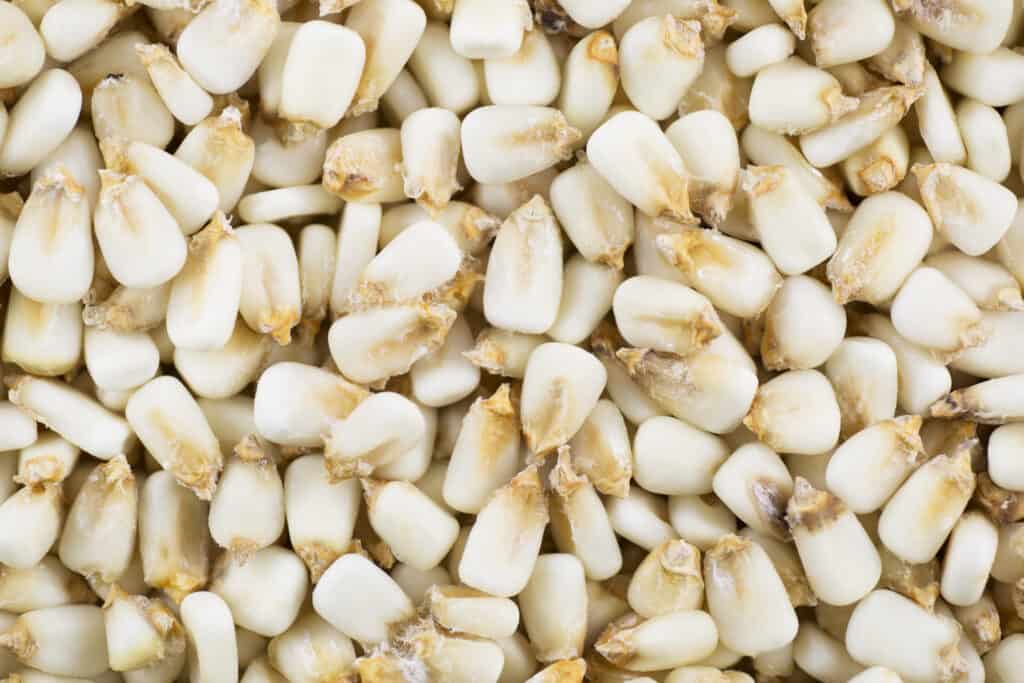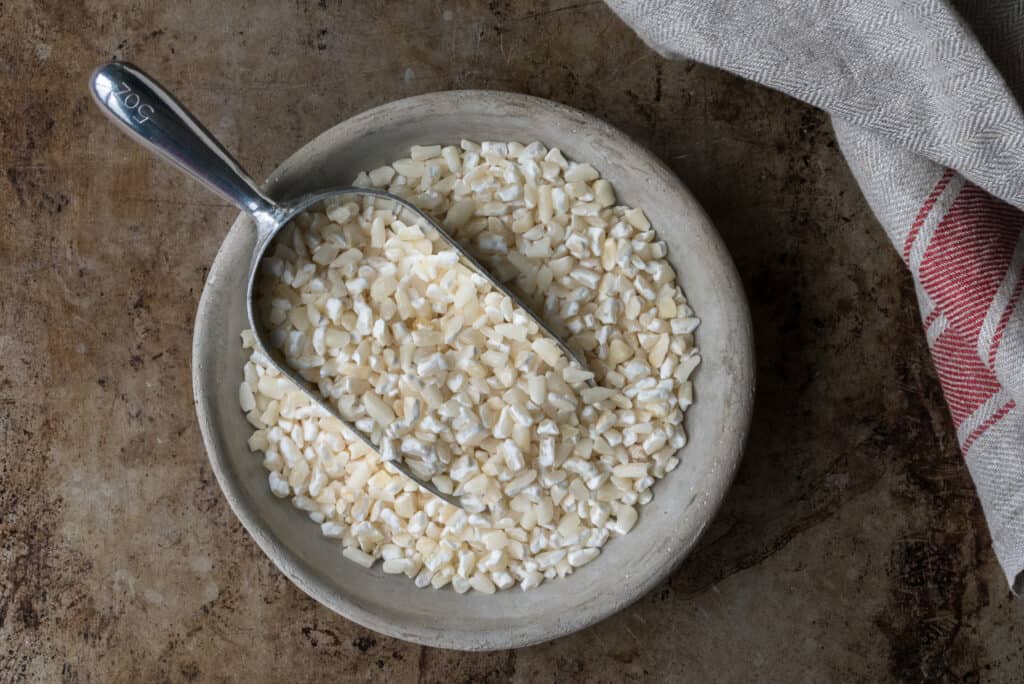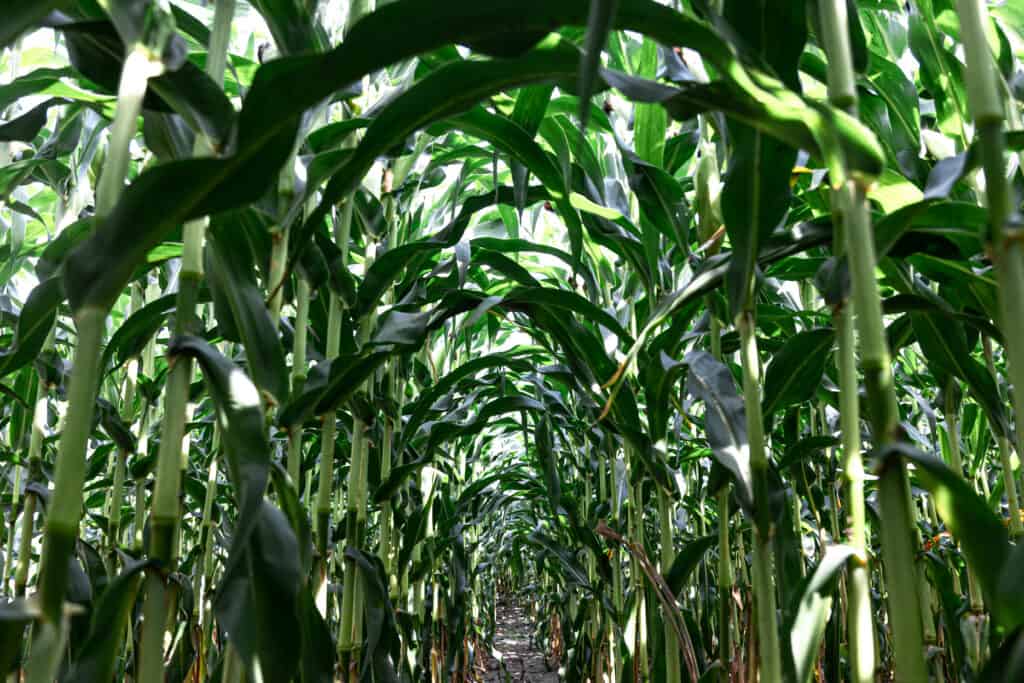Hominy and corn are two very popular foodstuffs and they are so similar there is only one difference. Do you know what the difference is? Let’s take a look at hominy plant vs. corn and find out what holds them apart. You might be surprised to discover it’s just a human interaction.
| Name | Hominy Plant (Zea mays subsp. Mays) | Corn (Zea mays subsp. Mays)sour |
|---|---|---|
| Origins | Mexico | Mexico |
| Hardiness | Zones 3-11 | Zones 3-11 |
| Perennial or Annual | Annual | Annual |
| Foliage | Green, long and ovate | Green, long and ovate |
| Flowers | Pollen inflorescences | Pollen inflorescences |
| Toxicity | Not toxic | Not toxic |
The Main Difference Between Hominy Plant and Corn
You may have noticed something odd in the comparison table above? Yes, they are the same! That’s because hominy plant is the standard corn plant we call maize.
The main difference between hominy plant and corn is the treatment process. They are the same plant, but hominy is corn kernels that have been processed. More on that below!
What Is Hominy Plant?

Hominy is simply corn kernels that have been nixtamalized.
©iStock.com/cheche22
Technically, an independent hominy plant doesn’t exist. Hominy is straightforward corn, sometimes called field maize, that’s been treated with alkaline in the form of lye or lime to remove the hard, inedible hull and plump up the kernel into a soft and chewy ingredient.
The process is called nixtamalization and it improves corn’s storage time because it prevents the kernels from sprouting. It was a very important way for our ancestors to make it through winter when nothing was growing.
What Is Corn?

Corn is a staple cereal crop that is consumed by humans and domestic animals and converted into corn ethanol.
©iStock.com/Julio Ricco
Corn is part of the Poaceae family of plants. It’s field maize, a staple cereal crop, that’s eaten worldwide. It’s called corn in North America and Australia but maize and corn names are interchangeable depending on where you live in the world.
It’s so popular that we produce 1.2 billion tons each year and its overtaken wheat and rice production. This is because humans and domestic animals both eat it. Corn is also made into corn ethanol, corn starch, cornmeal, and corn syrup.
Hominy Corn vs. Corn vs. Sweetcorn
So now we know the difference between hominy corn and corn, what about sweetcorn?
Sweetcorn is a sugar-filled cob, that’s much sweeter because it’s picked when it’s immature. This stage is called the “milk” stage and it’s obvious when you bite into a corn on the cob why it’s called that! Sweetcorn was a naturally occurring cross-breed of ancient maize.
Corn is picked when it’s passed the milk stage and the kernels have dried out, and hominy corn is nixtamalized corn.
Hominy Plant vs. Corn: Origins
Corn has a very long history. Most experts think it was domesticated in Mexico’s Balsas River area 9,000 years ago. It spread from Mexico over the Americas and when Europeans arrived in the 1400s they took corn to Europe where it was happy to grow in all kinds of climates.
The history of hominy is debated but the majority of historians think it quickly followed the corn plant’s domestication as a way of storing grain in the lean winter months.
What Is Nixtamalization?
It’s the process of using alkaline to make corn kernels soft, edible, and prevent them from sprouting.
The ancient Mexicans cooked freshwater shells over a fire and used the powder to form lye. When lye is boiled with corn it removes the husk to create hominy. The Aztecs also nixtamalized their corn into hominy using rehydrated limestone dust called “slaked lime.” It was combined with wood ash and boiled up with corn and voila…hominy!
It may sound as though it’s just adding chemicals to raw food but it actually boosts health by helping the absorption of niacin. Niacin is vitamin B3 and it turns food into usable energy. Niacin deficiency leads to sores, malnutrition, and a little-known illness called pellagra. The symptoms of pellagra are dementia, diarrhea, and dermatitis.
So not only did nixtamalization help communities store enough food to thrive, it provided a very necessary B vitamin they couldn’t easily get from unprocessed corn kernels.

Nixtamalization boosts the absorption of vitamin B3 (niacin), which turns food into usable energy.
©iStock.com/Michelle Lee Photography
Hominy Plant vs. Corn: Leaves and Flowers
Corn stems can reach a height of 10 feet but the tallest recorded plant reached 48 feet and two inches! It was grown in 2021 by Jason Karl in Allegany, New York, USA.
The plant produces something called pollen inflorescences that we better know as tassels or ears at the tip of its stem. If they are fertilized, the inflorescences turn into seeds which are the kernels we eat. Interestingly, corn pollen is anemophilous which means it’s dispersed in the breeze.
Hominy plant leaves are long, green, and fibrous. Some cultures use corn foliage to wrap up food in the store, in a lunch box, or served up on a plate.

Young green corn growing in a field
©iStock.com/user8547654
What’s the Difference Between Hominy Plant and Corn In Taste?
Hominy plant is chewy and puffy and tastes a lot like freshly made tortillas. It has a deeper richer flavor than corn or sweetcorn.
Where Did Hominy Corn Get It’s Name?
Hominy comes from the Native American Powhatan word chickahominy or rockahominy. In some countries, hominy corn is called by its full name.
Is Hominy Plant and Corn: Safe for Pets?
Yes, both hominy plants and corn are safe for pets if they don’t have an intolerance to corn. The nixtamalization process doesn’t change its toxicity. In fact, corn is a staple ingredient of farm animal diets including horses, goats, sheep, and cattle.
But be careful if you’ve made hominy at home. The alkaline that’s used to strip corn husks and kernels is not good for pets.

As long as your dog isn’t allergic to corn, it, and hominy, are safe for them to eat, though you should
neverfeed them corn on the cob.
©iStock.com/Firn
Hominy Plant vs. Corn Growing Zones
Most varieties of maize grow in USDA zones 3-11. It’s natively a warmth lover, but botanists have bred varieties that are cold-hardy because maize is such an important food and fuel product.
Sweetcorn plants are a little less hardy and start off in zones 4.
Hominy Plant Is Corn!
And corn is maize! It’s hard to compare hominy plant vs. corn because in essence, they are the same plant. The difference is that hominy is corn nixtamalized in an alkaline solution to remove the parts that are hard to eat and digest.
Next time you’re eating pozole, take a closer look. It’s not chickpeas in there, it’s one of the most ancient grains and forms of food preservation — hominy corn.
And hominy plant is corn…
And corn is maize!
Up Next:
- Can Dogs Eat Corn? Is It Safe?
- Catmint vs. Salvia: What Are Their Differences?
- Sweet Corn vs. Field Corn Plant: What’s the Difference?
The photo featured at the top of this post is © iStock.com/prayong kotjuk
Sources
- ASPCA, Available here: https://www.aspca.org/pet-care/animal-poison-control
- Plant Hardiness, Available here: https://planthardiness.ars.usda.gov/
- Bright Maize, Available here: https://www.brightmaize.com/surprsing-history-maize/
- Guinness World Records, Available here: https://www.guinnessworldrecords.com/world-records/tallest-sweetcorn-(maize)-plant
Thank you for reading! Have some feedback for us? Contact the AZ Animals editorial team.






